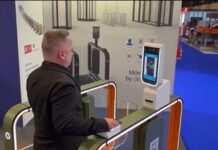
Ksenia Security has won two of the 2021 GIT security awards, one for each of the company’s nominated devices – the Matrix for category D – Access Control, Intrusion Alarms, Perimeter Protection, and the Energia for category F – Smart Home and Residential.
Matrix is a bi-directional universal radio interface for connecting third-party motion detectors to the Lares 4.0 platform, at 868 MHz frequency band.
Ksenia has been the first company to leverage the bi-directional communication features provided by several of the Optex outdoor detector series to enable a dynamic early detection system. The key benefit of the two-way integration is the detector’s settings can be modified remotely by the user depending on the situation and environment, for instance adjusting the sensor’s sensitivity or switching the battery saving mode. Ksenia has implemented two interfaces that integrate perfectly with Optex wireless sensors from BXS curtain detector, VXS 90-degree detector and wide-angle detectors of the WXI, WXS, QXI series, allowing complete remote management, via the Ksenia Secureweb cloud or the free Ksenia Pro App.
Energia is a module monitoring the total system power consumption continuously: if a threshold is set, an automatic disconnection of overloaded circuits starts, until the total system power consumption returns below the threshold value.
Enhancing the market awareness about the benefits of sustainable energy, it is the stated goal of current government regulations. The Energia module produced by Ksenia Security for the energy sector, has been designed to fully meet this project in terms of electric load management, including renewable sources, and control and balancing of power consumptions.
The Energia module needs to be linked to the Lares 4.0 control panel via the KS-BUS. It becomes the ideal complement when Lares 4.0 is used in the home & building automation field. Power consumption management is implemented starting from the data collected by the Energia module. Subsequently, an application logic processes the data collected, structures and stores them and finally shows the result of energy consumption trends to the users, in the form of bar charts.











